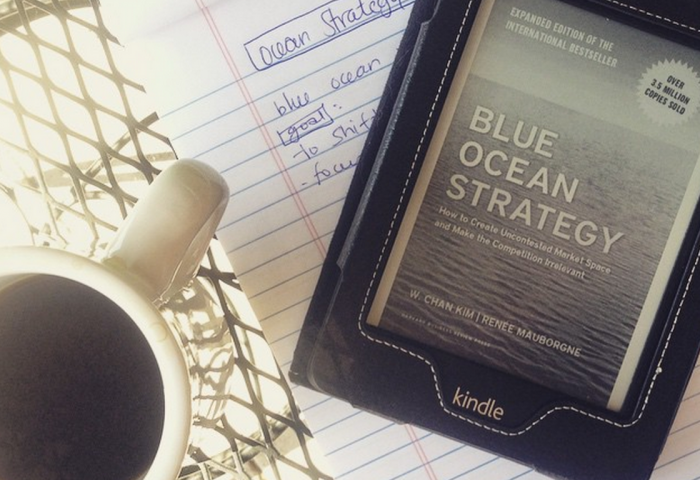A guest post written by Monica Borrell, CEO and founder of Cardsmith – a brainstorming and project management tool for remote teams.
Brainstorming with your team can improve motivation and increase the cohesiveness of your team. A common issue with having remote teams is the disconnect and feeling like a distant part of the team.
I know a CEO of a large company who has created a culture of brainstorming at every meeting. Each time, he starts with a group brainstorm. He leaves the floor wide open for individuals to offer whatever they want to talk about and contribute any ideas they think will best serve the meeting or the team’s purpose. The result is transformative. This CEO says all the best creative thinking comes out in the first 15 minutes of each meeting, and the quality of ideas far surpasses anything he got out of his meetings prior to making this one small change.
But, what if your brainstorming sessions become boring? The brainstorm sessions I used to lead followed a predictable pattern: I’d schedule them when I needed to come up with new quarterly goals and strategies—and that was all we discussed. Nothing earth-shattering happened and over time we weren’t producing any new ideas. My team wasn’t fully participating and they didn’t really seem to care. I needed to kick things up a notch if I wanted better results!

A great way to make brainstorming more productive and fun is to add creativity to the process. This is especially useful when all the participants are sitting in front of screens in remote locations. If you’re a participant, you know how easy it is to become disengaged. When the meeting inevitably moves off in a direction that doesn’t involve you, you start multitasking. That is until suddenly someone asks you a question and you have to pretend like you were paying attention. Oops! If you’re the one leading these meetings, you’re left wondering if people are actually listening. This isn’t fun for anyone.
I came to the realization that I only used brainstorming when planning something big, like those quarterly goals. Actually, it is a useful tool to employ much more often—in fact, you can incorporate brainstorming into every meeting you lead. When done right, this will hold your team’s attention and help them form common bonds around projects. This keeps everyone engaged and committed to a successful outcome.
Here’s how to make that happen for your team.
How to infuse creative brainstorming into every meeting
Here are some ways you can add a bit of brainstorming into all of your remote meetings. It doesn’t have to take up a lot of time. Pick one or two things to try over the next few weeks, then notice how it changes the dynamic of your teams and the quality of their input.
1. Agenda Du Jour
How it works: Start your meeting by having your team brainstorm to decide the agenda of that meeting.
Time Investment: 5 to 10 minutes at the beginning of the meeting.
Benefits: Helps team feel more involved in regularly scheduled meetings such as a weekly project status update—meetings that generally feel rote and unengaging.
2. Check In
How it works: Get everyone brainstorming about what they consider to be the current issues facing the team or the project.
Time required: 5 to 10 minutes at the beginning of the meeting.
Benefits: Adds interest to regularly occurring meetings, opens the leader’s eyes to any hidden or recurring problems, helps team members feel heard and less frustrated. This process also calms the mind of all participants as you get into the meat of the meeting, which leads to more effective collaboration and better solutions.
3. So Much Winning
How it works: Brainstorm current wins at the beginning of a meeting.
Time required: 5 to 10 minutes.
Benefits: This is useful for cross-functional team meetings where not everyone is aware of all the little wins that are happening across the organization. Encourage everyone to share something each week, even if it’s a small win. This helps individuals feel valued. This exercise can be especially useful when there seems to be an endless stream of work and issues to solve—it keeps your team positive and focused on accomplishments rather than failures. If you do this regularly, your team will always have something to look forward to in the next meeting.
4. Have Some Fun
How it works: Brainstorm something fun, like ideas for the next team celebration or a unique team-building opportunity.
Time required: 10 to 20 minutes.
Benefits: This type of brainstorming gives your team something positive to discuss. It’s a great way to lighten up a “serious” team or build cohesiveness among a new team. Because people enjoy talking about fun topics, this is a great starter brainstorming exercise. And it can have long-term positive effects. When a friend’s company brainstormed fun activities, someone suggested a trip to an ice rink to learn how to play the team sport called curling. Years later, employees still talk about how much fun they had that day.
5. Seeking Solutions
How it works: Brainstorm possible solutions to a business problem.
Time required: 1 hour.
Benefits: Focusing the entire meeting on a single purpose is a great way to come up with lots of solutions to the problem. You’ll get valuable input from the people who are most directly affected by the problem. Because your team members deal with this issue daily, you’ll get the insider’s view of what’s going wrong and unique ideas about how to fix it.
6. Defining Your Culture
How it works: Use your brainstorming session for cultural change and team building.
Time required: 1 hour.
Benefits: This practice will increase empathy between team members and clarify your team values—particularly what it means to act in accordance with those values. I worked with a company recently whose stated values included integrity and accountability. But what, exactly, is integrity? What does accountability really mean? Value words like these are just words unless the group shares a common definition and understanding of what that looks like in action. I asked this group questions like, “How do you define accountability?” “What does it look like when someone is accountable?” “How does it feel when you are not accountable?” This helps team members state their own individual values, and develop empathy toward the feelings others have around the topic. Ultimately it helps everyone end up on the same page about corporate values. This kind of brainstorming engages all participants and gets them thinking collectively.

7. King or Queen for a Day
How it works: Ask employees what they would do if they were king or queen of the company.
Time required: 10-20 minutes.
Benefits: First let me say, this is one of my favorite brainstorming activities! I ask things like, “What would you do first?” “What do you see as our biggest problem?” “How would you solve that problem?” Be ready to hear creative, interesting ideas that are truly useful. Your team likely thinks about things that need to be changed more than you realize, and from perspectives that are likely to surprise you. You’ll get a lot of unique solutions. And your team members will appreciate being asked the question!
To learn more about creative brainstorming and tools that help you can engage all of your remote team members, check out our Cardsmith blog and online organization tools.



Responses